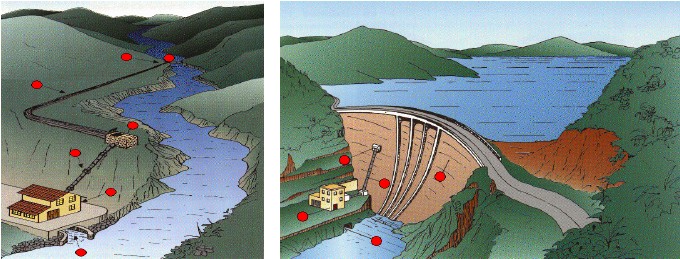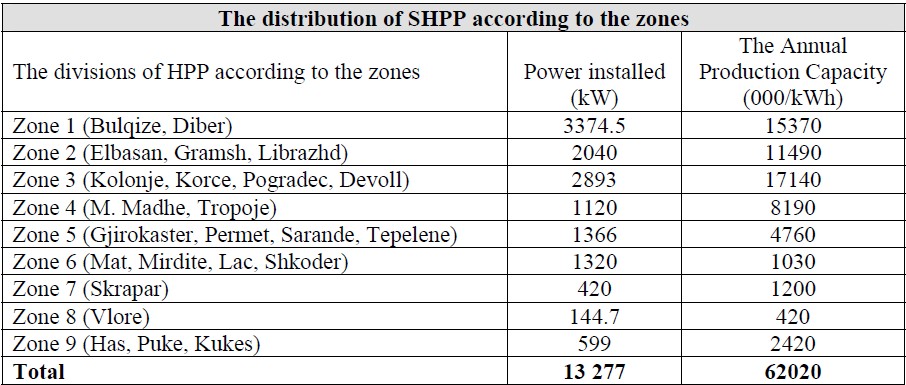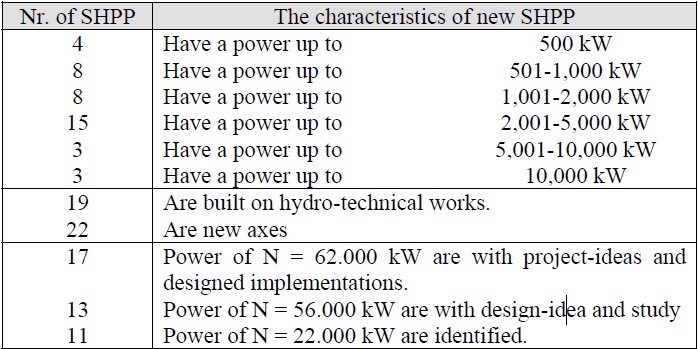Albania Hydropower Potential
Hydropower is a form of renewable energy that captures the potential energy of flowing water to convert it into electricity. A distinction is made between: Run-off river systems, where (a part of) the river flow is captured and led along a turbine. Pumped storage hydropower, where a lake is used as storage system in order to use the differences in availability of power.
The latter system operates to pump up water levels when the energy supply is cheap (for example at night, or after the winter) and to allow the outflow of water from the storage lake when the availability of peak capacity is low (and the electricity price is high). Large scale hydropower plants are sometimes not (fully) acknowledged as sources of renewable energy, because of the large environmental effects on habitats turning a valley into a basin for the hydropower plant, removing large numbers of people, animals and agricultural land (Ecofys BV 2006).
Background
Hydropower has been available since late 19th century on the Balkan Peninsula generating therefore one of the first ‘industrial’ forms of renewable energy. Several hydropower plants from the early 20th century, have fallen in dismay and are not or not fully been operated at full capacity. In Albania, the highest profit from the hydro-energy is due to the huge water power stations. A high interest is the building of the small hydro power plant (SHPP). A number of 83 SHPP have been built until 1988. Initially, the construction of the SHPP, has intended the energy supply of the remote mountainous area. Today, the energy production of SHPP is related to the Albanian energy system.
Actually it results that only a part out of the 83 existing SHPP are functioning. The rest is out of use due to different reasons. In general, all the existing SHPP have been constructed in attractive areas, taking into consideration the potential and availability aspects of water and hydraulic charge for the electric production energy. The major part of the SHPP are in very bad conditions due to the neglecting and the arbitrary destruction during the riots and tumults of 1997 and afterwards. The equipment is highly damaged and stolen. Since water is highly used in summer for irrigation or potable water, there is no energy production during season. There is no documentation for the water source hydrology, as it is known that water supply is the crucial parameter for energy (Xhelepi 2006).
Potential
Although a substantial portion of the current electricity supply of Albania is covered with hydropower, the potential is clearly larger, due to different sources and uneven relieve as far as topography is concerned. The highest profit from the water energy is realized through the usage of huge hydropower stations, but a considerable interest presents the use of the water energy through the SHPP. Albania has high amount of hydro-energy potential that goes up to 16 billion kWh, 30-35% out of which can be used. The map of the existing and new SHPP is shown below.
Installed capacity
Until 1998, a number of 83 SHPP have been built in Albania with a installed power of 50 to 1200 kW and a capacity of 25 MW. These SHPP are of the derivation type and they use the water sources and incomes nearby. The major parts of SHPP equipments are maid in: Austria, Germany, China, Hungary, and Italy. Another part of them are produced in Albania. The turbines are: FRANCIS, PELTON and BANKI, while the generators are Synchronous, mainly of a low power. The average age of these SHPP is 25 years old. The following table can be provided by classifying the 83 SHPP according to the regions (more detail characteristics are presented on Annex B).
The studies show that there is the possibility of building new SHPP with a capacity of 140 MW and annual production of 680 GWh. All the SHPP are of the derivation type, without dam and catchments. From the 41 studied SHPP it results: (detailed characteristics are presented on Annex B).
As far as the territorial distribution is concerned, it results that 28 SHPP with a power of 100000 kW can be built in the North, generating 65% of the total power. Whereas 13 SHPP with a power of 40000 kW can be built in the South generating 35% of the total power.
Characteristic features for Albania
Albania is ranked as a country of considerable water richness with a hydrograph distribution in all territory. Albania, with it surface of 28748 km2, has a hydrographical distribution of 44000 km2, or 57% more than state territory. The hydrographical territory of Albania has an average of 400 mm rain per year. There is snow in the height of 1000 m, which remains for several months and ensures the water supply for the rivers and their bridges for the period of spring and summer. Due to irregular distribution there are considerable changes in the rivers and their branches. During the winter season the water flow income are quite high, while during summer they decrease in a considerable amount. This is the reason that flooding is 70% in winter and 30% in summer and autumn.




